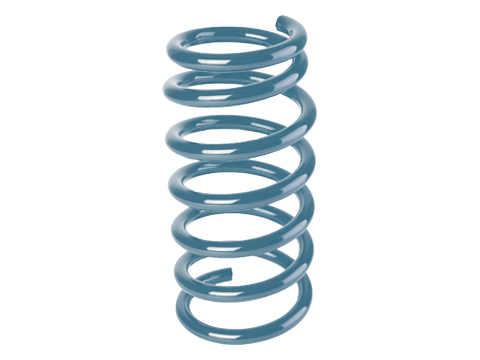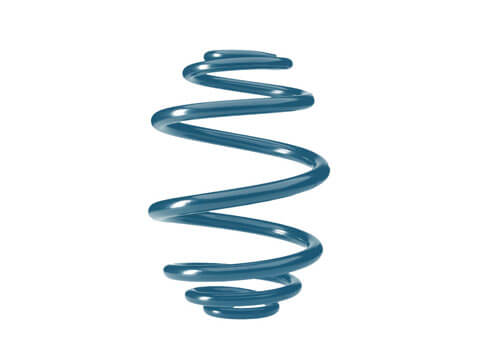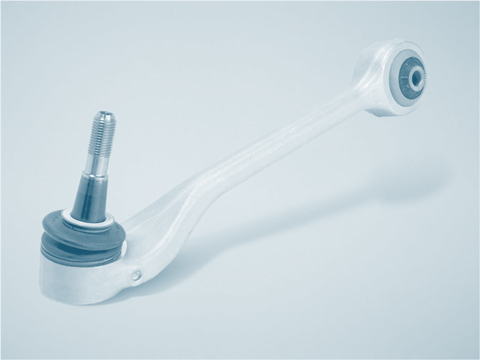Strut
The strut refers to the connection between the shock absorber and the suspension spring. It is a central component of a vehicle's suspension system.
Function

The illustration shows a spring, which is one of the components of the suspension strut.
Source: Herth+Buss
The strut combines the shock absorber and the suspension spring, linking the chassis to the wheel. It plays a crucial role in comfort, stability, and safety.
A strut integrates two essential suspension components into a single unit:
- Spring:
Typically a coil spring, it absorbs vertical impacts and vibrations from the road. It ensures that the wheels maintain contact with the road by compensating for uneven surfaces. - Shock absorber:
Also known as a damper, the shock absorber inside the strut controls the spring's movement. It converts the kinetic energy released when the spring rebounds into heat. By damping vibrations from the chassis and wheels, it ensures controlled suspension behaviour, improving both safety and ride comfort.
Struts are usually found on the front axle of a car, while on the rear axle, springs and shock absorbers are often installed separately.
Safety
A fully functional strut is essential for vehicle safety. By damping body movements, it helps maintain vehicle control in various driving situations. A faulty strut can lead to unstable handling, longer braking distances, and impaired manoeuvrability, increasing the risk of an accident.
Note
If you experience issues with the strut or other suspension components, it is advisable to have the vehicle checked by qualified professionals at an authorised workshop. Regular maintenance and the timely replacement of struts contribute to preserving safety, performance, and vehicle longevity.







